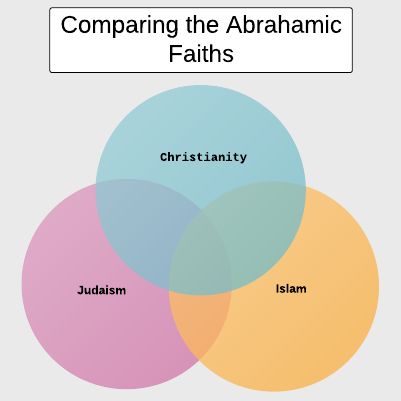COMPARATIVE RELIGION LESSON
OBJECTIVE
The point of this exercise is to clear up misconceptions about religions, as well as promoting religious literacy. Hinduism and Buddhism may share many similarities, but they are not the same. This can even be the case within a religion, such as Protestantism and Catholicism. Most major religions include different sects and beliefs, which can be very diverse. Just as important, we need to disregard the notion that one radical person or group represents the entire religion. For example, the vast majority of Muslims do not support terrorism.
ACTIVITY
1) Each student should write down one characteristic of a religion, such as a belief or ritual, on a piece of paper – but without naming the religion. For example, one piece of paper might read “meditation,” and another may read “red dot on forehead.” Teacher will collect all the slips of paper.
2) Teacher will put on board a list of prominent religions. Then he/she will read each slip of paper, and students will try to guess which religion it is associated with. For example, “meditation” could be put under Buddhism, and the teacher (or even better, a student) can explain its religious significance and perhaps clear up any misconceptions. Some characteristics, like prayer, can be listed under multiple religions. This would be a great time to address extremist stereotypes that have classified some faiths due to the deviant actions of a few.
 |
 |
| Tibetan nuns in meditation (Associated Press). |
Time Magazine cover depicting Indian woman. |
3) Now that the major religions are on the board, see if students can group similar religions together. Eventually distinguish between Abrahamic monotheistic traditions (Christianity, Judaism and Islam) and Sage traditions (Buddhism and Hinduism). Abrahamic traditions tend to be characterized by monotheism and prophetic revelations, while Sage traditions teach that revelation (or enlightenment) can come from within the individual.
ASSESSMENT
Using the information on the board, along with the Comparative Religion chart, have students create a Venn diagram either: 1) comparing Abrahamic and Sage traditions, or 2) comparing two or three specific religions. A Venn diagram comprises overlapping circles that help to identify similarities and differences among entities. Students can be organized in small groups or pairs for the assessment, or it can be given as an individual homework assignment.

FINAL THOUGHTS
As students engage in comparative religion, it should dispel the notion that “all religions are the same.” Indeed, each of the major religions make claims of exclusivity or special enlightenment that can only be obtained through abiding by one’s faith. The acknowledgement of these differences between the religious traditions can lead to a productive interfaith dialogue that is elaborated upon in the next section.
|


